Iceland, a land of fire and ice, offers some of the most spectacular natural wonders on the planet. From the dancing Northern Lights to the vast expanses of untouched wilderness, this island nation invites travelers to explore its unique landscapes that combine volcanic activity, glacial power, and the relentless forces of water and wind. This guide presents fifteen of Iceland’s most breathtaking destinations, providing insights into each location’s beauty and majesty. Whether you’re soaking in a geothermal hot spring, trekking across a glacier, or witnessing the raw power of a waterfall, Iceland promises an unforgettable journey into the heart of nature’s artistry.
1. The Blue Lagoon
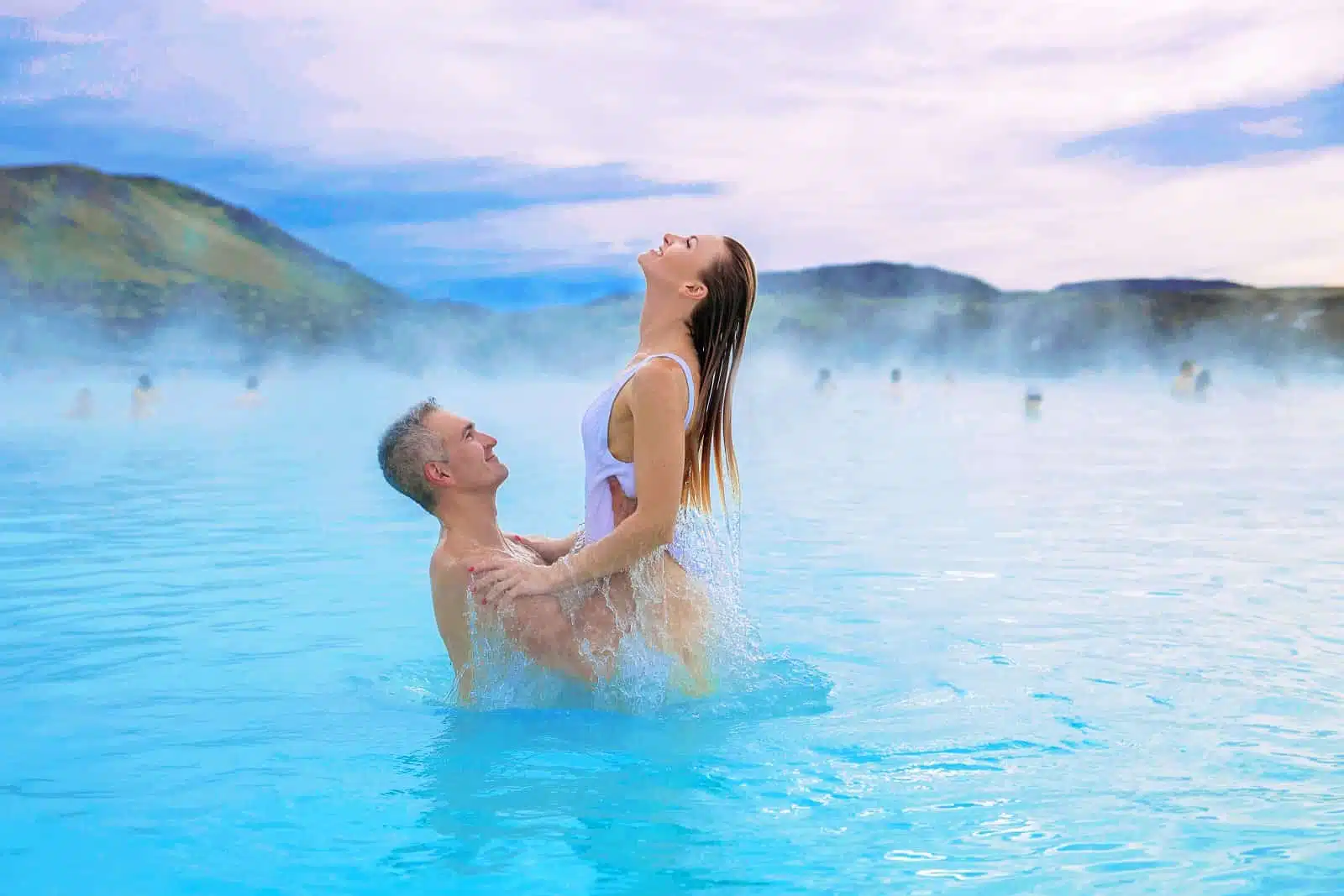
Image Credit: Shutterstock / Alla Laurent
The Blue Lagoon is one of Iceland’s most iconic destinations. It is renowned for its milky-blue geothermal waters against a stark lava field. Rich in minerals like silica and sulfur, the lagoon’s warm waters are believed to have healing properties, offering a unique spa experience. The Blue Lagoon is not just a natural wonder but also a feat of sustainability, utilizing the geothermal power that epitomizes Iceland’s innovative approach to nature.
Insider’s Tip
Book your visit in advance and aim for a morning slot to avoid the crowds and experience the serene beauty of the lagoon in a more intimate setting.
When to Travel
The Blue Lagoon is open year-round, but visiting during spring and fall shoulder seasons can offer a more peaceful experience.
How to Get There
Located 45 minutes from Reykjavik and 20 minutes from Keflavik International Airport, the Blue Lagoon is easily accessible by car or shuttle service.
2. Gullfoss Waterfall
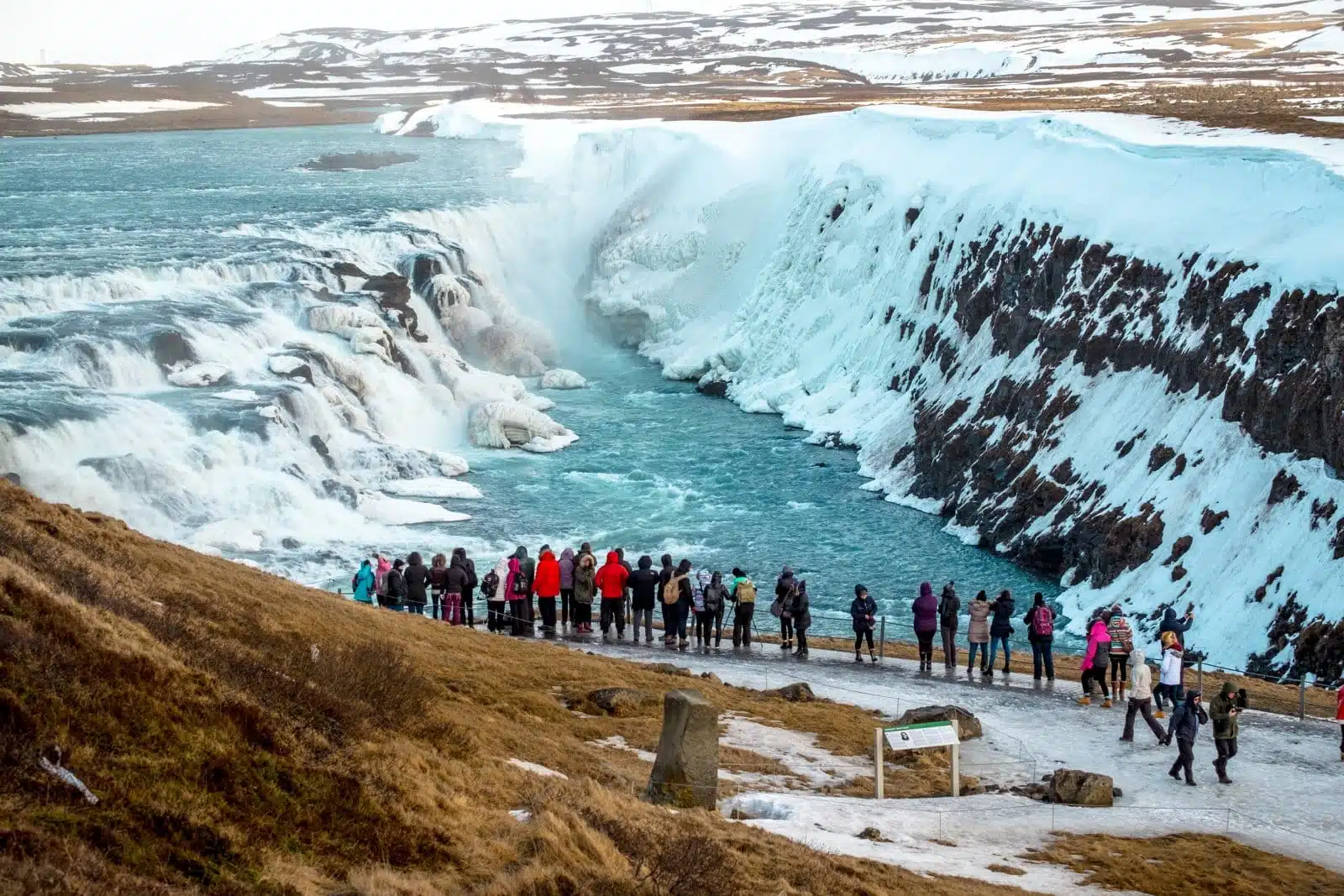
Image Credit: Shutterstock / lenggirl
Gullfoss, or “Golden Falls,” is a stunning waterfall in the canyon of the Hvítá River in southwest Iceland. Part of the famous Golden Circle route, Gullfoss is known for its immense power and beauty, cascading down in two stages into a deep crevice hidden from view, creating an awe-inspiring spectacle. The waterfall’s surrounding landscapes are equally breathtaking, offering panoramic views of Iceland’s rugged terrain.
Insider’s Tip
Visit Gullfoss during the late afternoon when the sunlight can create rainbows over the falls, adding an extra layer of magic to the experience.
When to Travel
Summer offers the fullest flow and accessibility, but visiting in winter provides a chance to see the falls amidst ice and snow, offering a different kind of beauty.
How to Get There
Gullfoss is about a two-hour drive from Reykjavik, easily accessible by car or as part of a guided tour along the Golden Circle.
3. Þingvellir National Park

Image Credit: Shutterstock / Parilov
Þingvellir (Thingvellir) National Park is a site of geological, historical, and cultural significance. It lies in a rift valley where the North American and Eurasian tectonic plates are pulling apart, offering a visible demonstration of continental drift. Þingvellir is also the site of Iceland’s first Parliament, making it a UNESCO World Heritage site that marries natural beauty with deep historical roots.
Insider’s Tip
For the adventurous, snorkeling or diving in the Silfra fissure within the park offers a chance to float between two continents in crystal-clear waters.
When to Travel
Summer is ideal for hiking and exploring, but the park’s beauty is undeniable year-round, with each season offering its unique charm.
How to Get There
Þingvellir is about 45 minutes from Reykjavik by car, making it an easy day trip for those in the capital.
4. The Northern Lights (Aurora Borealis)
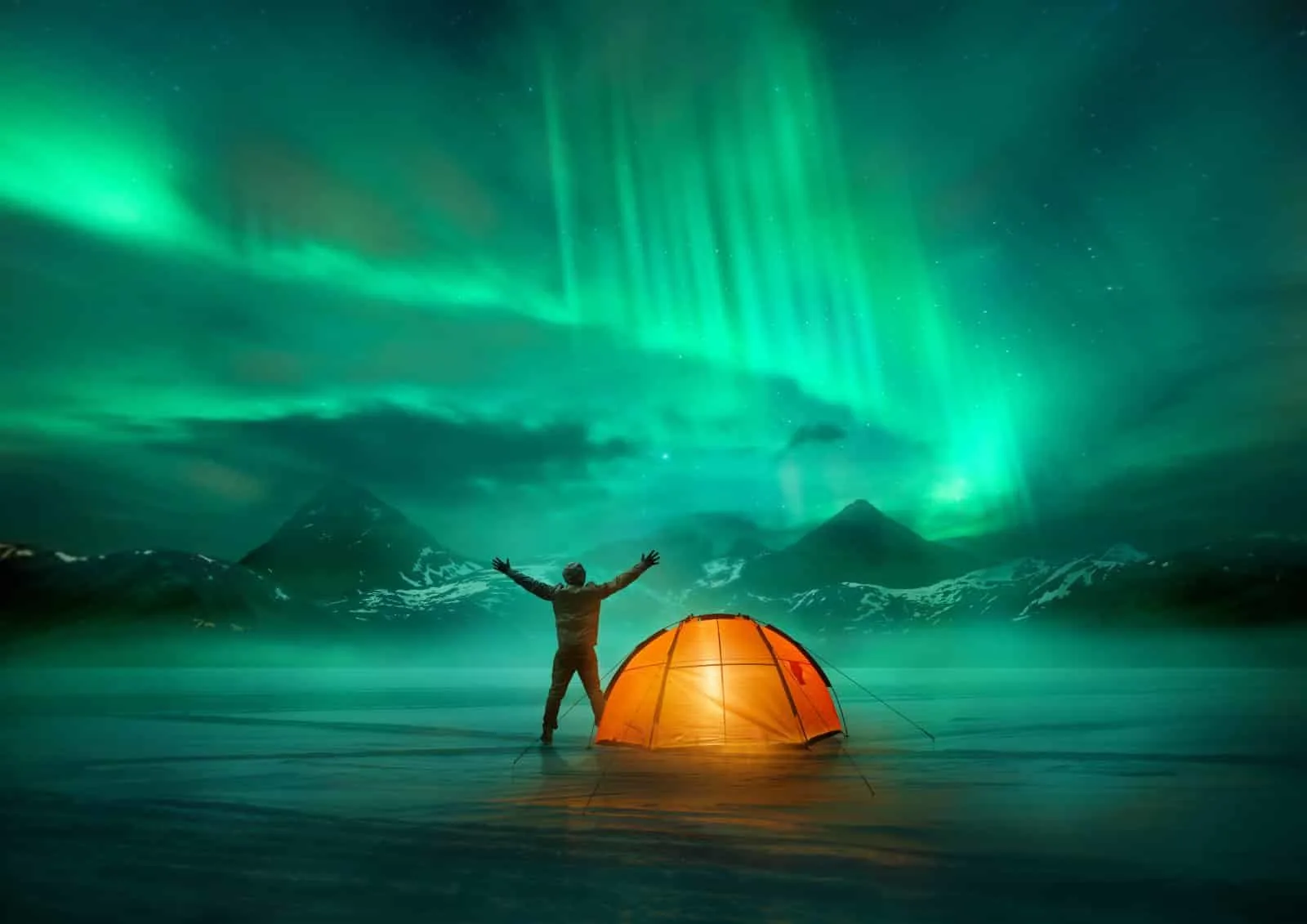
Image Credit: Shutterstock / solarseven
The Northern Lights, or Aurora Borealis, are one of nature’s most spectacular displays, and Iceland offers some of the best viewing opportunities in the world. This natural phenomenon occurs when solar particles interact with the Earth’s magnetic field, creating vibrant colors that dance across the night sky. The experience of watching the Northern Lights in Iceland’s vast, unspoiled landscapes is truly unforgettable.
Insider’s Tip
The best chances to see the Northern Lights are from September to April, on clear, dark nights. Consider staying in a remote location away from city lights to improve your viewing chances.
When to Travel
The winter months offer the longest nights, providing the best opportunities to witness this celestial display.
How to Get There
While the Northern Lights can be seen from anywhere in Iceland, the areas around Þingvellir National Park and the southern coast are particularly popular for their dark skies and stunning backdrops.
5. Jökulsárlón Glacier Lagoon

Image Credit: Shutterstock / Max Topchii
Jökulsárlón Glacier Lagoon is a breathtaking natural wonder on Iceland’s southeast coast, where icebergs from the surrounding Breiðamerkurjökull Glacier float in a stunning lagoon before drifting out to sea. The lagoon offers an ever-changing landscape of ice, with hues ranging from deep blue to crystal clear, set against the backdrop of Iceland’s dramatic coastal scenery.
Insider’s Tip
Take a boat tour on the lagoon to get up close to the icebergs and possibly spot seals lounging on the ice.
When to Travel
The lagoon is accessible year-round, but the summer months offer boat tours, while winter provides a serene, frozen landscape.
How to Get There
Jökulsárlón is about a five-hour drive from Reykjavik along the Ring Road, making it an essential stop on a road trip around Iceland.
6. Vatnajökull National Park
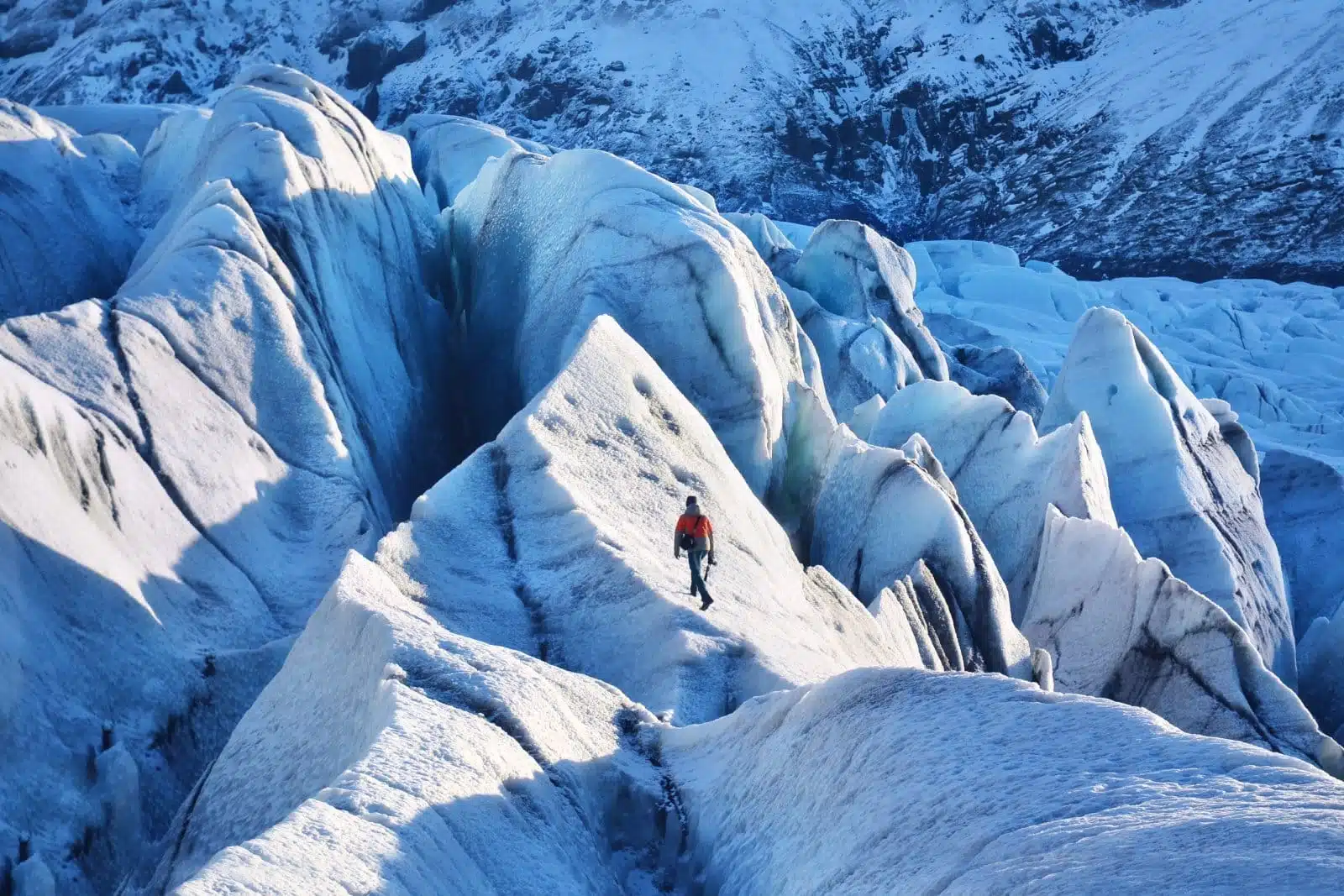
Image Credit: Shutterstock / kovop
Vatnajökull National Park, named after Europe’s largest glacier, Vatnajökull, encompasses a vast area of Iceland’s southeast. The park is a realm of contrast, featuring everything from ice caves and glacier lagoons to volcanic sites and rugged mountain peaks. It offers unparalleled opportunities for adventure and exploration, highlighting the dynamic forces that shape Iceland’s landscapes.
Insider’s Tip
For a truly unique experience, visit the ice caves in winter or early spring when they are most stable and accessible.
When to Travel
While the park’s attractions vary by season, summer offers the most accessibility for hiking and exploring the glaciers.
How to Get There
The park’s various entrances are accessible via the Ring Road, with the Skaftafell region being a popular starting point for many excursions.
7. Mývatn Nature Baths

Image Credit: Shutterstock / Puripat Lertpunyaroj
The Mývatn Nature Baths, located in the north of Iceland, offer a more secluded alternative to the Blue Lagoon. These geothermal baths are set amidst a landscape of volcanic rock, providing a tranquil setting to relax and enjoy Iceland’s geothermal activity. Rich in minerals, the warm waters of the baths are both soothing and healing, offering a peaceful retreat in the heart of Iceland’s volcanic north.
Insider’s Tip
Visit during the evening to enjoy a quieter experience, potentially under the glow of the Northern Lights in the winter months.
When to Travel
The baths are open year-round, but visiting in the winter offers the magical possibility of bathing under the auroras.
How to Get There
The Mývatn Nature Baths are about a 90-minute drive from Akureyri, Iceland’s second-largest city, accessible by domestic flight from Reykjavik.
8. Reynisfjara Black Sand Beach
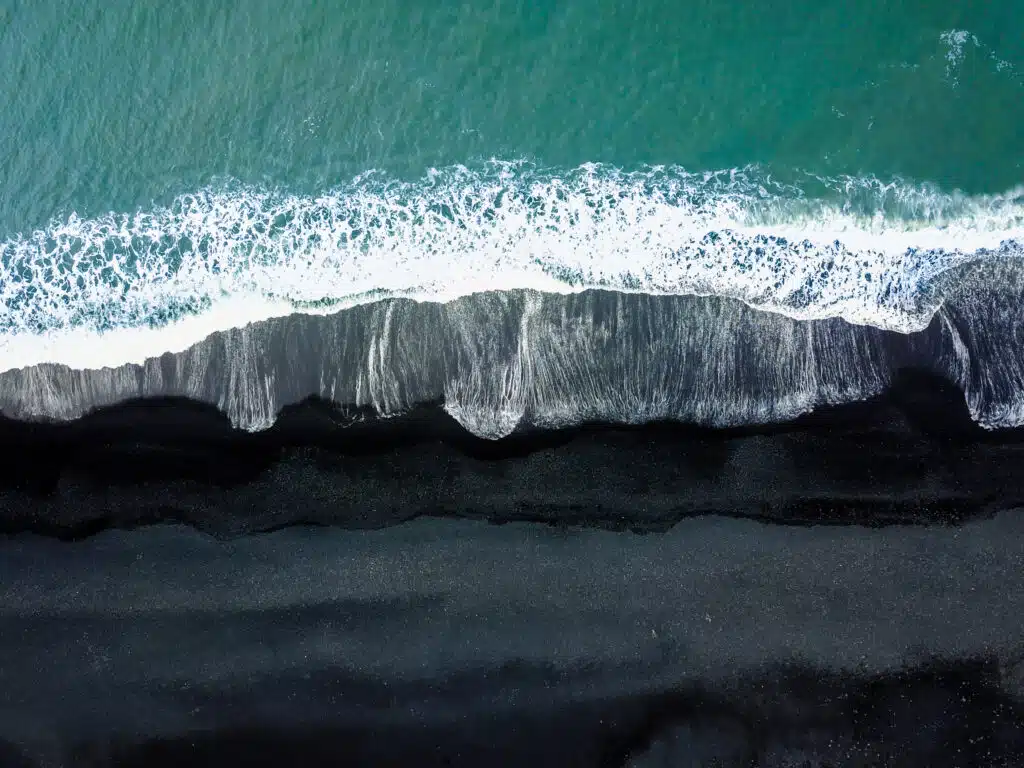
Image Credit: Shutterstock / Nathan Mortimer
Reynisfjara, near the village of Vík in southern Iceland, is famed for its striking black sand, towering basalt columns, and the powerful waves of the North Atlantic Ocean. The beach offers a dramatic landscape that is both beautiful and a reminder of nature’s power. The nearby Reynisdrangar sea stacks add to the mystical atmosphere of the beach, making it a must-visit for photographers and nature lovers alike.
Insider’s Tip
Exercise caution near the water, as the beach is known for its dangerous sneaker waves. Stay well back from the water’s edge and heed local warnings.
When to Travel
Reynisfjara can be visited year-round, but summer offers longer daylight hours for exploring the beach and its surroundings.
How to Get There
The beach is about a two-and-a-half-hour drive from Reykjavik, easily accessible by car and a popular stop on South Coast tours.
9. Landmannalaugar

Image Credit: Shutterstock / Mladen Mitrinovic
Landmannalaugar, situated in the Fjallabak Nature Reserve in the highlands of Iceland, is renowned for its rhyolite mountains, whose colors range from pink to green to yellow. The area offers some of Iceland’s best hiking, with routes leading through lava fields, around colorful mountains, and past geothermal hot springs where hikers can take a soothing dip.
Insider’s Tip
The Laugavegur Trail, starting in Landmannalaugar and ending in Þórsmörk, is one of Iceland’s most famous treks. Plan and book your trip well in advance if you intend to tackle this multi-day hike.
When to Travel
The highland roads to Landmannalaugar are only open during the summer months, from late June to early September, making this the best time to visit.
How to Get There
Access to Landmannalaugar is via mountain roads (F-roads), requiring a 4×4 vehicle. Guided tours are also available from Reykjavik.
10. Skógafoss Waterfall

Image Credit: Shutterstock / Slyrritus
One of Iceland’s largest and most picturesque waterfalls, Skógafoss has water plummeting 60 meters over a wide cliff, creating a thunderous roar and often a rainbow in its mist. Located on the Skógá River along the country’s southern coast, the waterfall is easily accessible and offers stunning views both from its base and from a vantage point at the top of a steep staircase.
Insider’s Tip
For a unique perspective, visit Skógafoss early in the morning or late in the afternoon to avoid the crowds and catch the light at its best for photography.
When to Travel
Skógafoss is impressive year-round, but the flow is strongest in the late spring and summer after the winter snows have melted.
How to Get There
The waterfall is located just off the Ring Road, about a two-hour drive from Reykjavik, making it an easy stop on a South Coast tour.
11. Snæfellsjökull National Park

Image Credit: Shutterstock / Monkey Business Images
Snæfellsjökull National Park, located on the western tip of the Snæfellsnes Peninsula, is dominated by the Snæfellsjökull glacier, which covers a dormant volcano. The park has stunning natural beauty and diverse landscapes, including lava fields, craggy cliffs, and black sand beaches. It’s also steeped in folklore and said to be one of the Earth’s seven major energy centers, attracting those interested in the mystical and natural.
Insider’s Tip
Take a guided glacier hike on Snæfellsjökull for breathtaking views and a closer look at the glacier’s unique features.
When to Travel
The summer months offer the best conditions for exploring the park’s diverse landscapes and wildlife.
How to Get There
Snæfellsjökull National Park is about a two-hour drive from Reykjavik, making it an ideal destination for a day trip or as part of a longer itinerary around the Snæfellsnes Peninsula.
12. Dettifoss Waterfall
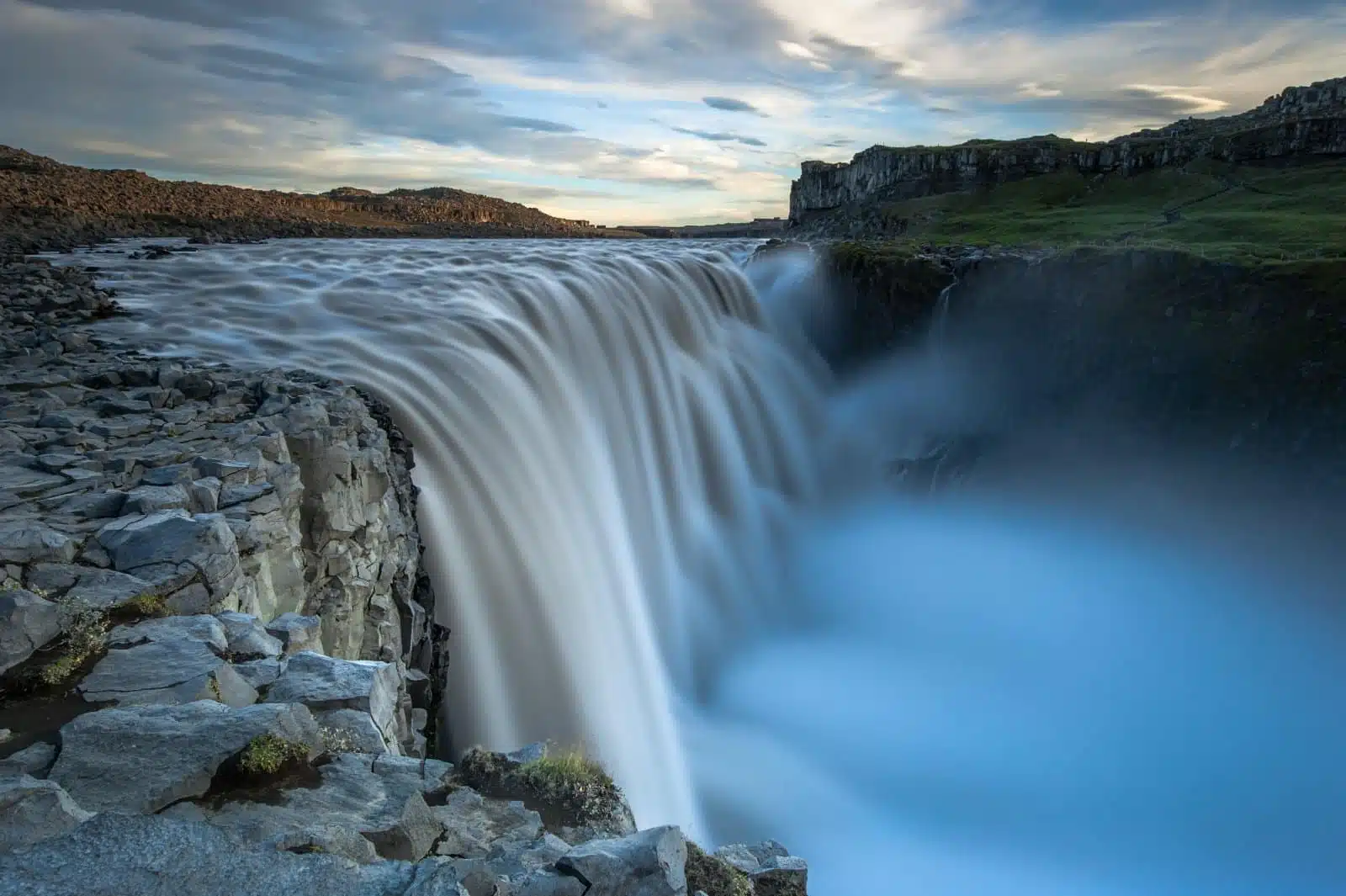
Image Credit: Shutterstock / Thomas Lusth
Dettifoss, located in Vatnajökull National Park in Northeast Iceland, is reputed to be the most powerful waterfall in Europe. The waterfall’s sheer force and the volume of water cascading down into the Jökulsárgljúfur canyon make it a breathtaking sight. The surrounding landscape, characterized by rugged terrain and the stark beauty of the Icelandic highlands, adds to the waterfall’s dramatic appeal.
Insider’s Tip
There are two viewing points for Dettifoss, on the east and west banks of the river. The east bank offers closer views, but the west bank provides a more comprehensive view of the waterfall’s context within the canyon.
When to Travel
The roads to Dettifoss are usually accessible from late May to September, making summer the best time to visit for ease of access and full water flow.
How to Get There
Dettifoss is accessible by a two-hour drive from Akureyri, Iceland’s second-largest city, which is connected to Reykjavik by domestic flights.
13. Askja Caldera
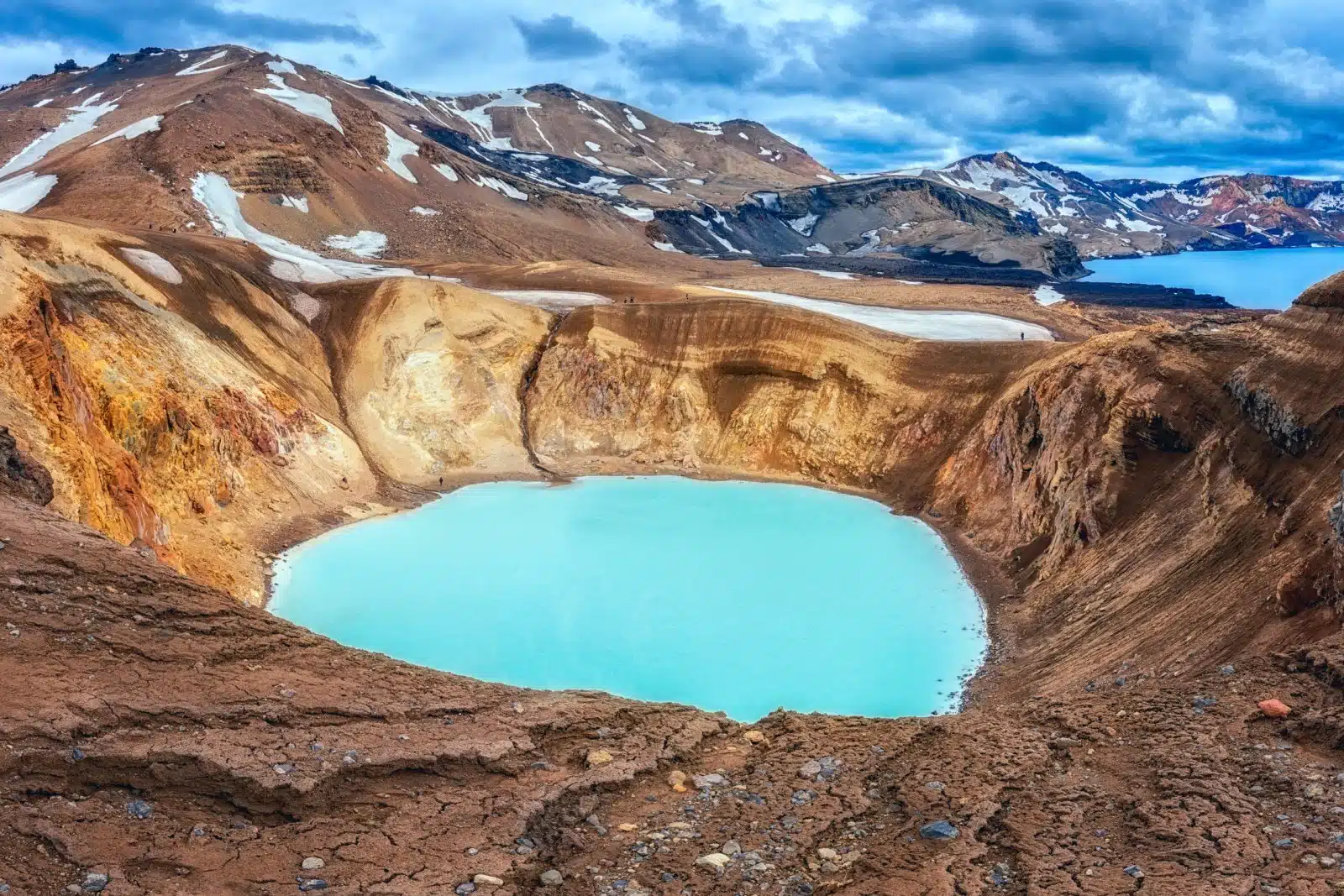
Image Credit: Shutterstock / Uhryn Larysa
The Askja Caldera, located in the remote central highlands of Iceland, is a stark and otherworldly landscape that offers a glimpse into the volcanic forces that shape the island. The caldera is part of the larger Dyngjufjöll mountain range. It contains several volcanic craters, including the striking Víti crater, which holds a geothermal lake of milky blue water.
Insider’s Tip
A dip in the warm waters of Víti crater is a must-do for those making the journey to Askja. The hike to the crater can be challenging, so be prepared with good footwear and warm clothing.
When to Travel
Access to Askja is only possible during the summer, from late June to early September when the F-roads through the highlands are open.
How to Get There
Due to its remote location, the best way to visit Askja is by joining a guided tour from Akureyri or Mývatn, which includes transportation capable of handling the rough highland roads.
14. Húsavík
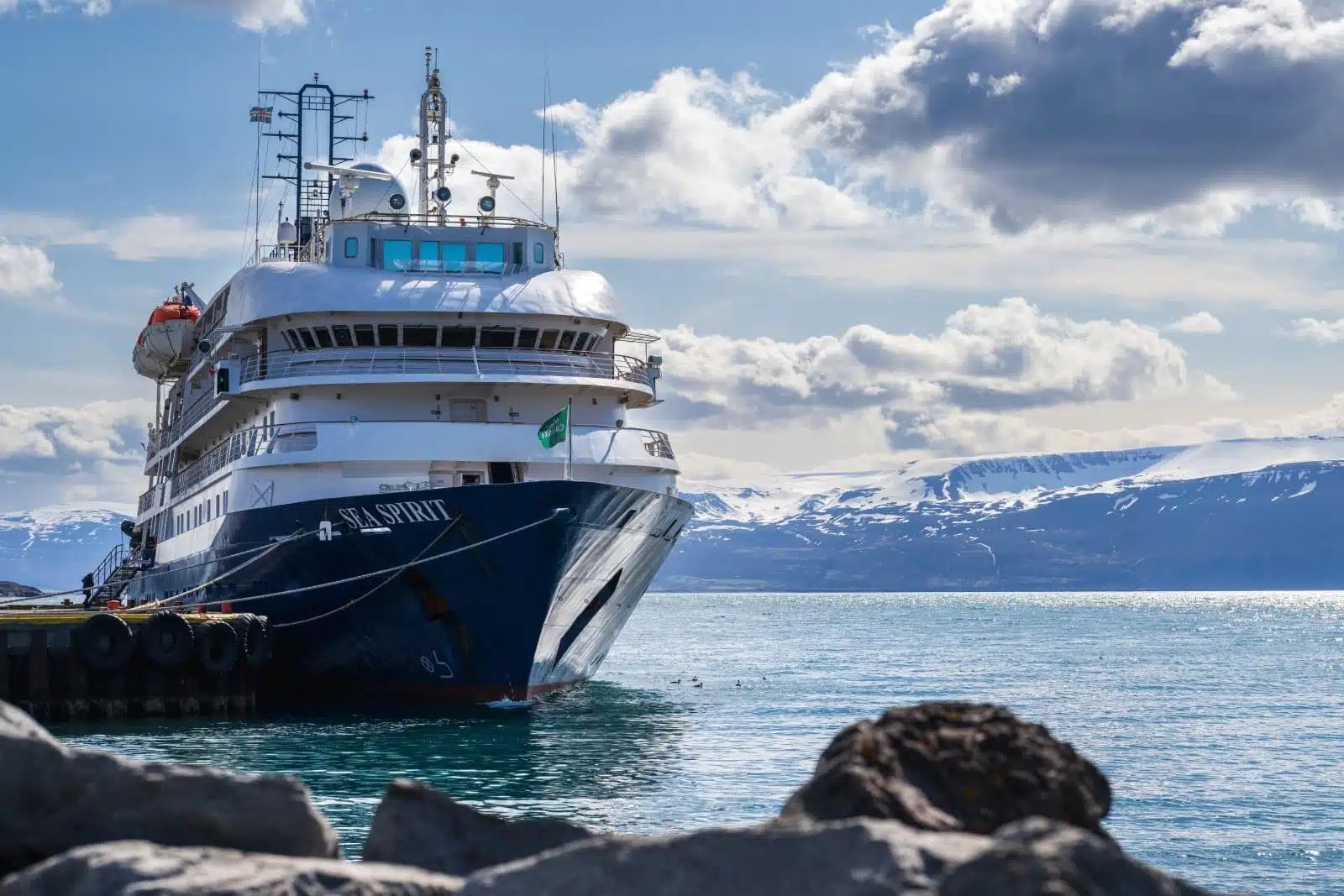
Image Credit: Shutterstock / S. Birkelbach
Húsavík, often called the whale-watching capital of Iceland, is a charming town on the north coast. The town’s waters are rich in marine life, making it one of the best places in Europe to observe whales in their natural habitat. Species commonly seen include humpback, minke, and sometimes even blue whales. The town also hosts the Whale Museum, adding an educational component to the whale-watching experience.
Insider’s Tip
For the best whale-watching experience, opt for a tour on a traditional Icelandic oak boat. These tours offer a closer encounter with the whales and provide a sense of Iceland’s maritime heritage.
When to Travel
The prime whale watching season in Húsavík runs from April to October, with the highest likelihood of sightings in the summer months.
How to Get There
Húsavík is about an hour’s drive from Akureyri, which is accessible by domestic flight from Reykjavik. The town can also be reached by car as part of a road trip around the Ring Road.
15. Rauðisandur Beach
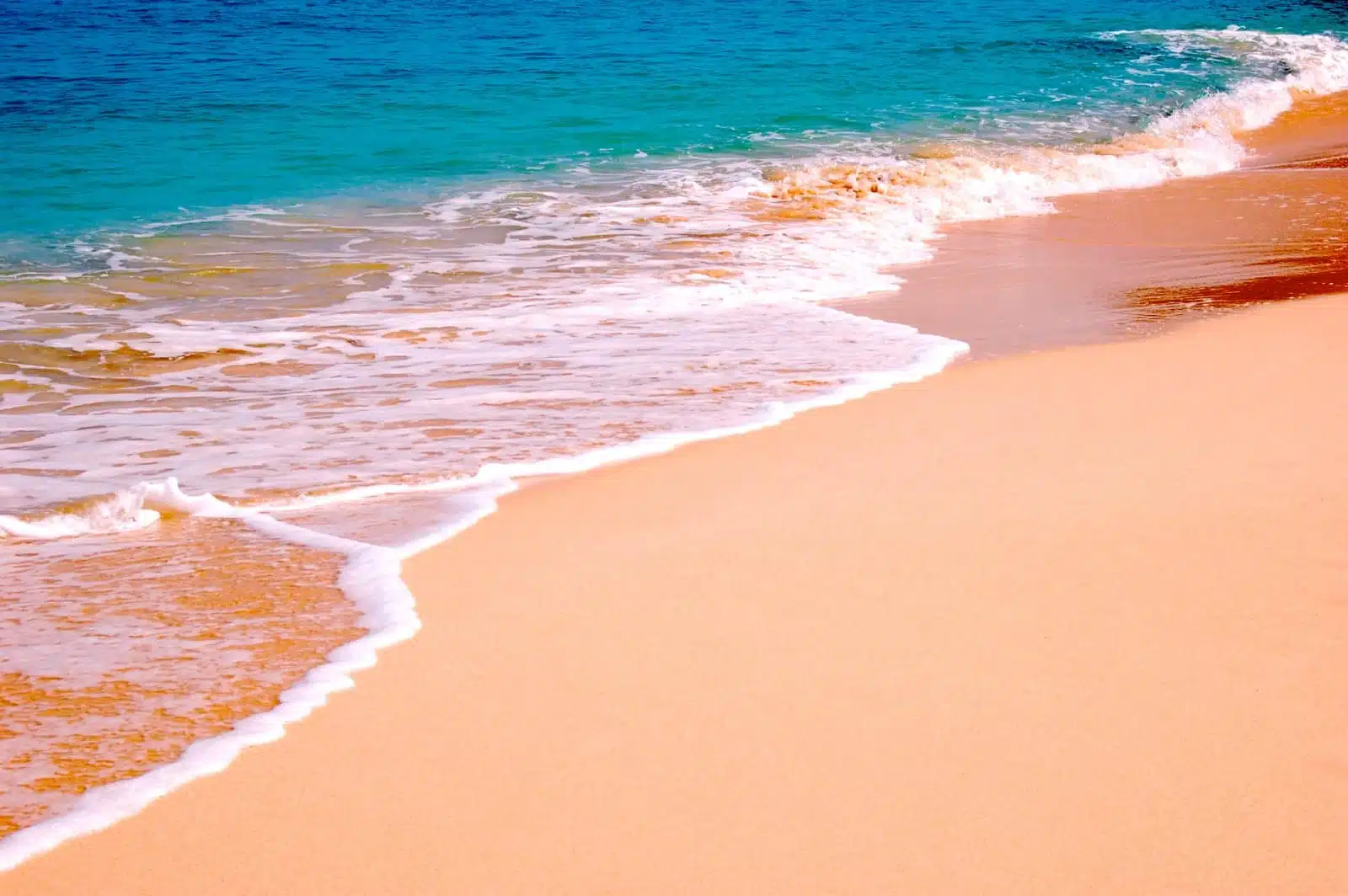
Image Credit: Shutterstock / Ed Little
Located in the Westfjords, Rauðisandur Beach is a stunning expanse of reddish-gold sand that stretches for kilometers along the coast. Unlike Iceland’s more famous black sand beaches, Rauðisandur’s unique coloration and remote setting offer a different beach experience, set against the dramatic backdrop of the Westfjords’ cliffs and mountains. The beach’s tranquility and natural beauty make it a perfect spot for those looking to escape the more touristy areas of Iceland.
Insider’s Tip
Visit Rauðisandur at low tide when the beach is at its most expansive and the sand takes on a particularly vivid hue in the sunlight.
When to Travel
The best time to visit Rauðisandur is during the summer months when the roads are most accessible, and the weather is more likely to be sunny and mild.
How to Get There
Rauðisandur is accessible by car from Patreksfjörður, a town in the Westfjords. The journey involves driving on mountain roads, offering spectacular views of the region’s landscapes.
The Bottom Line

Image Credit: Shutterstock / Izabela Magier
Iceland’s natural wonders offer an unparalleled journey into the forces that shape our planet. From the soothing warmth of geothermal baths to the awe-inspiring power of waterfalls and volcanoes, each destination provides a unique window into the beauty and majesty of the natural world. Whether you’re basking in the midnight sun or gazing up at the Northern Lights, Iceland promises an experience that will resonate with you long after you’ve returned home. So pack your bags, embrace the spirit of exploration, and prepare to be transformed by the land of fire and ice.
More From The Green Voyage
12 Best Practices for Sustainable Travel in 2024 – How to Travel With Minimal Environmental Impact
Unlocking Hotel Perks – A Traveler’s Guide to Maximizing Hotel Reward Programs for Optimal Benefits
Travel Hacks for Frequent Flyers – 6 Tips and Tricks to Make the Best of Air Travel
The post Iceland’s 15 Natural Wonders – A Travel Guide 2024 first appeared on The Green Voyage.
Featured Image Credit: Shutterstock / G-Stock Studio.
For transparency, this content was partly developed with AI assistance and carefully curated by an experienced editor to be informative and ensure accuracy.
Tips for Trip Success
Book Your Flight
Find an inexpensive flight by using Kayak, a favorite of ours because it regularly returns less expensive flight options from a variety of airlines.
Book Your Hotel or Special Accommodation
We are big fans of Booking.com. We like their review system and photos. If we want to see more reviews and additional booking options, we go to Expedia.
You Need Travel Insurance!
Good travel insurance means having total peace of mind. Travel insurance protects you when your medical insurance often will not and better than what you get from your credit card. It will provide comprehensive coverage should you need medical treatment or return to the United States, compensation for trip interruption, baggage loss, and other situations.Find the Perfect Insurance Plan for Your Trip